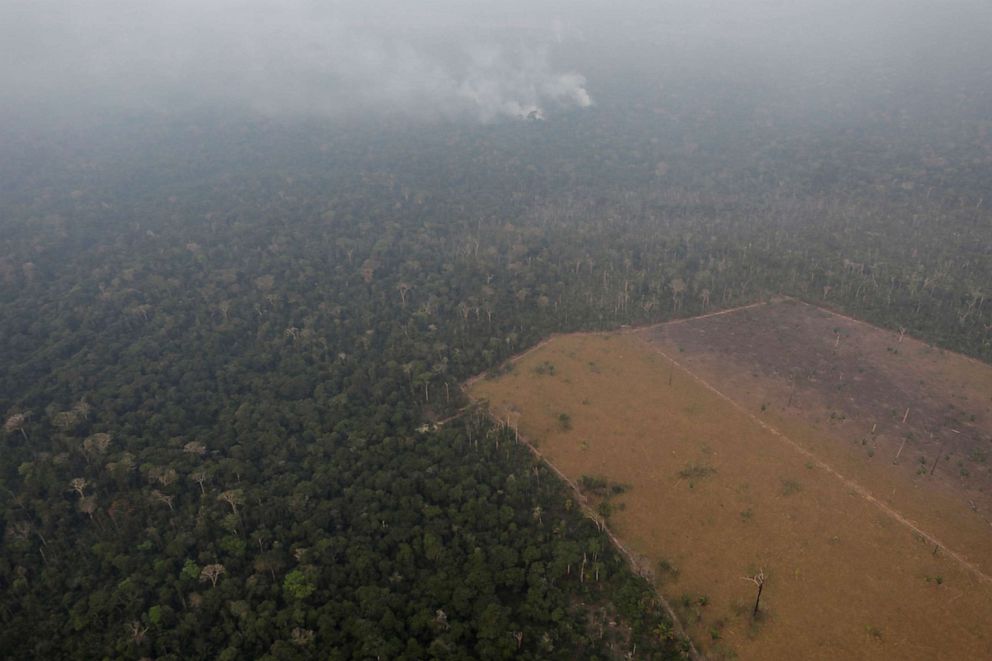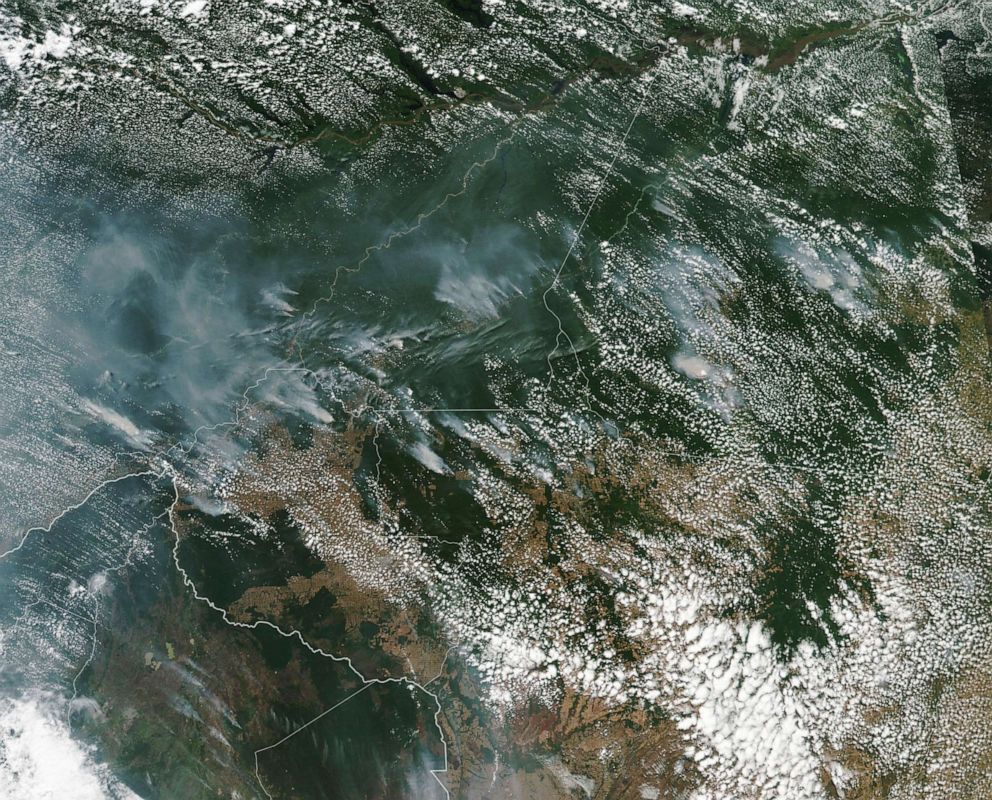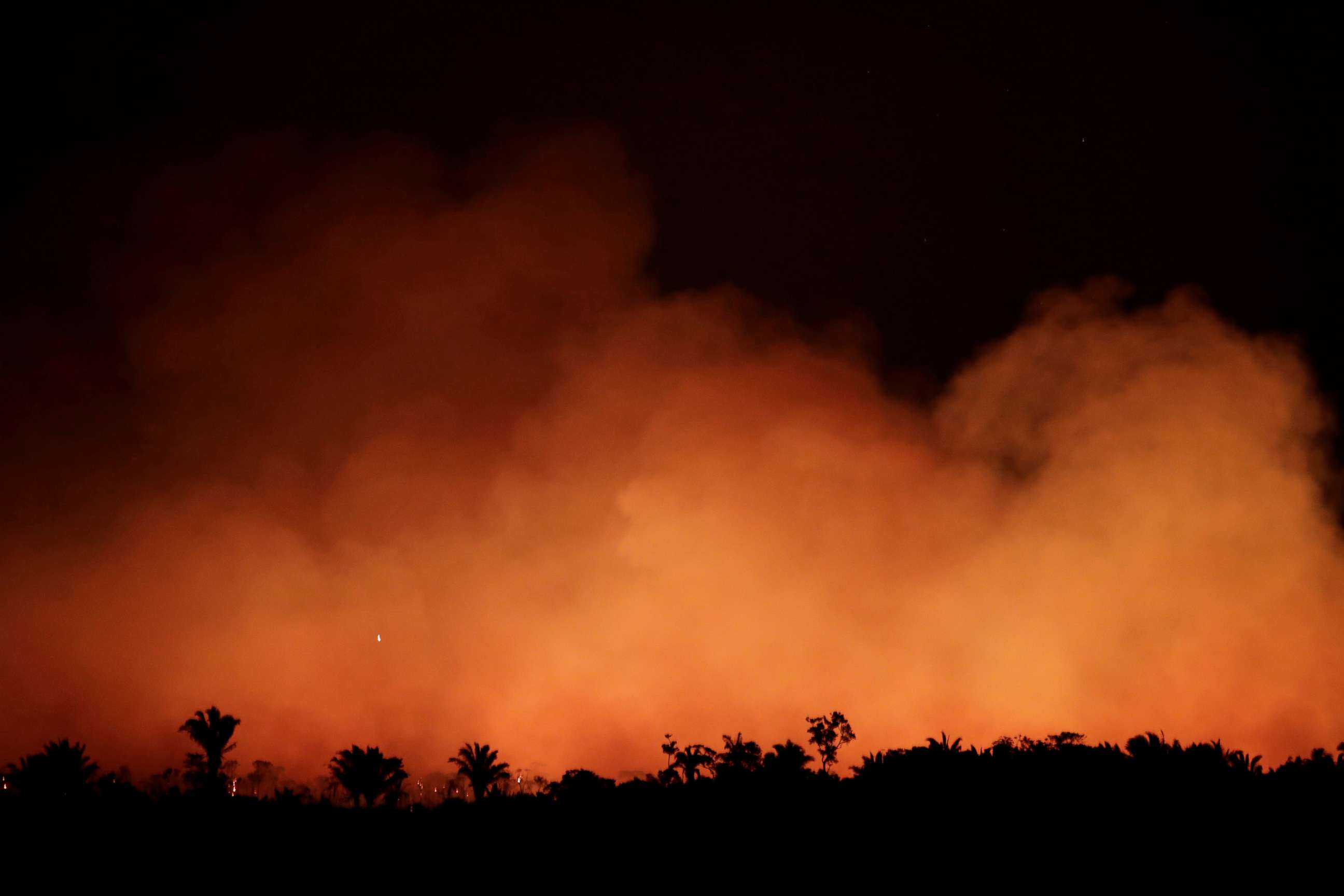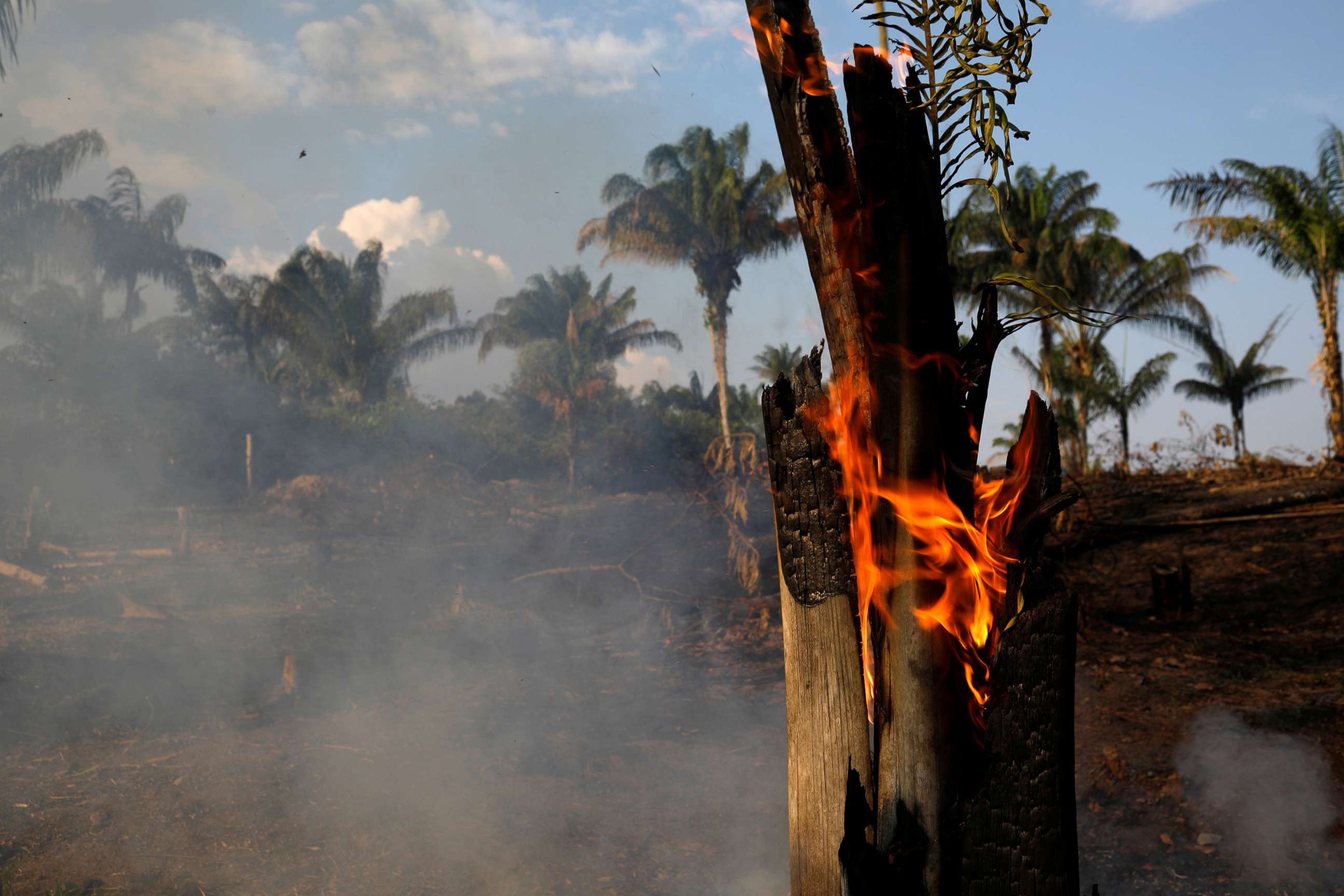Expansive fires in the Amazon rainforest are 'truly heart-wrenching,' NatGeo explorer says
Andres Ruzo said people can help through donations and visiting.
Professionals who have spent years working and studying in the Amazon rainforest called this year's expansive fire outbreaks "truly heart-wrenching."
Many are on edge due to the increasing scale of the forest fires, which are up 84% from the same time period last year, as smoke billows above 1.2 million square miles of land.

Geothermal scientist, NatGeo explorer and conservationist Andres Ruzo, who has worked in the Central Peruvian Amazon at the Boiling River for the last 10 years, detailed the current conditions.
"Fires do happen, but not on this scale and that's something that's truly heart-wrenching," Ruzo told ABC News. "You've got huge plumes of smoke, nasty deforestation because of these fires and when you're talking about an area that's truly one of the greatest celebrations of life on this planet -- that literally cleans our water, purifies our air -- we gotta get worried."
Following his return from leading a 41-person research team into the jungle, Ruzo said the Amazon could lose the size of up to "30 soccer fields every single minute of rainforest being destroyed."
Claire Bower, a journalist who lives in Rio de Janeiro, told ABC News that the smoke is a major concern and covers "what is basically half of Brazil and neighboring countries like Bolivia and Peru."
"The smoke is so bad that it even caused a daytime blackout some 1,700 miles away in Sao Paulo, which is Brazil's biggest city," she said.

Like Ruzo, she explained that wildfires are quite common this time of year during the dry season.
"What's different this time is that new government satellite data shows a massive unprecedented increase in the number of fires this year since January," Bower said. "We're talking about more than 72,000 fire outbreaks. But most shockingly, more than 9,500 fires just since last Thursday."
She added that it is still unclear if the fires were set deliberately for farming purposes or by accident.

What this means for the planet?
The Amazon is often referred to as "the lungs of the planet." It's home to 10 percent of the world's species and creates 20 percent of our oxygen.
"This is one of the most biodiverse areas on the planet," Ruzo said. "There's so many things that [we] take for granted. It could be medicines, it could be new molecules that could help improve the human condition, that are lying in waiting to be discovered in the Amazon."
Ruzo described the constantly changing ecosystem as "natural biological warfare" where plants, animals and insects try to "outdo each other to create new compounds which can greatly benefit" people.

How can you help?
Monitor what you eat and where it comes from.
"Beef is a big industry down there," Ruzo said, which is a large contributor to clear cutting and deforestation. Other natural resources from the Amazon include palm oil and wood.
Ruzo also suggested donating to organizations and above all else, visit.
"One of the best things we can do is actually go visit the Amazon," he said. "It's an amazing celebration of life, after you leave the jungle the rest of the world kind of seems sterile. Your tourist's dollars there show people directly -- that this place is worth protecting."




